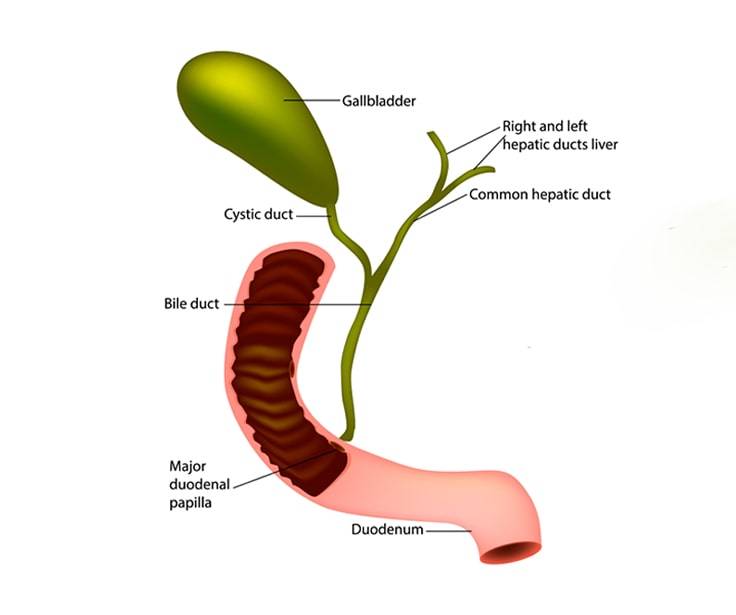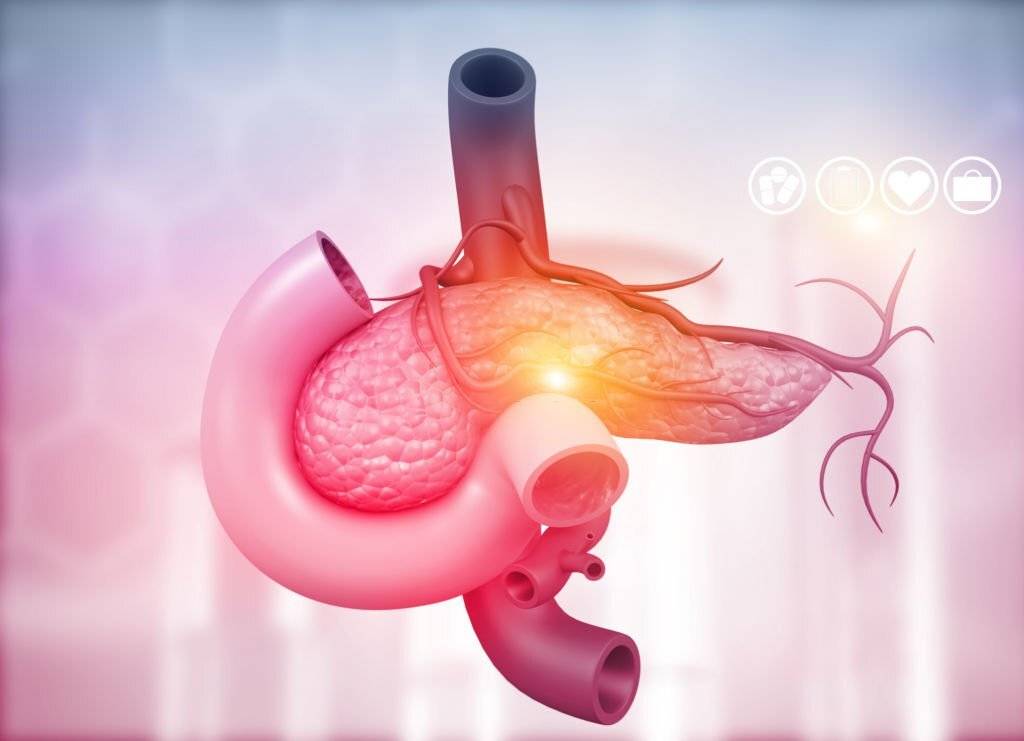
Hepato-Pancreato-Biliary Surgeon in Kolkata
What is Gallbladder Cancer?
If cancerous cells are found within the gallbladder, you are diagnosed with gallbladder carcinoma. Gallbladder cancer may be found in the primary area of your gallbladder and may also expand to other parts within your body. Cancer of the gallbladder is much more prevalent among those who are elderly and are of certain ethnicities. The earlier that the cancer is discovered the lower the chance of survival rate. Dr. Azhar is known for the most effective Hepato Pancreato Biliary doctor in Kolkata.
How can I combat gallbladder cancer?
Gallbladder cancer happens the term used to describe cancerous (cancerous) cells are formed in the gallbladder. The gallbladder is an oval organ which is situated beneath your liver, and is located in your abdomen.
The four tissue layers which form the gallbladder’s exterior.
The outer layer (mucosal)
Muscle layer.
A connective tissue layer.
It is the outermost layer (serosal)
Gallbladder cancer is a disease that begins within the mucosal layer it then spreads to the outside. It’s usually discovered after gallbladder surgery, but after the disease has progressed to a higher-risk stage.
Gallbladder Carcinoma

What are the symptoms and signs of gallbladder cancer?
If you’ve had an infection in your stomach caused by the bacteria Helicobacter Pylori (also called H. Pylori), the chances of being diagnosed with stomach cancer are much higher. It can cause stomach ulcers. If you are doing this you are at risk of getting stomach cancer are greater.
What is the treatment for Hydatid Cysts inside the liver?
Hydatid illnesses in humans are most often caused by infections with the larval stage of Echinococcus Granulosus the dog tapeworm. Following the ingestion of eggs of the tapeworm from dogs suffering from it can be a very serious pathogenic, parasitic and zoonotic illness. Hydatid diseases pose a significant and widespread problem in certain regions around the globe.
Cystic hydatid disorders typically affect the liver (50 to 70 70%) however, less frequently the kidneys and the spleen and also the brain and bones. When a cyst ruptures within the peritoneum or the biliary tract, liver hydatidosis could result in anaphylaxis or spreading. The cyst infection could cause liver abscesses along with other complications like an effect of mass on the vessels of the bile ducts and cholestasis.
Treatment of the hydatid cysts in the liver should be carried out when there are symptoms or serious cysts. The most recent treatment options for hydatid-related cysts of the liver comprise an operation that involves percutaneous draining and medical treatment. The traditional approach, or laparoscopic surgery is the best choice.
Bile Duct Stones
What is Bile Duct Stones?
Bile duct stones are gallstones within the bile. They may begin in the gallbladder, move into the bile canal or even form inside the bile canal within the conduit itself. Blockages can develop when stones are lodged within the gallbladder. This multidisciplinary unit at U of M’s Division of Gastroenterology offers the most up-to-date minimally invasive procedures to treat gallstones in the bile duct. These procedures are extremely rare and only offered by highly experienced gastroenterologists with extensive experience with them. The gallstones and the bile duct stone (also known by choledocholithiasis), are identical, but they are located in different parts of the body. Stones may pass through the bile drain without any intervention. If a stone gets caught in the bile drain it’s likely that organ damage or inflammation to develop.
What are the signs for Bile Duct Stones?
There are rarely any symptoms for bile-duct stones , until that stone has blocked the bile passageway. This could be a sign of:
- Acute abdominal pain that can be intermittent and last for several hours.
- Nausea
- Vomiting
- Fever
- Jaundice
What is Choledochal Cysts?
Choledochal cysts may be congenital abnormalities of the bile-duct. Cystic dilatations can be seen in the biliary tree through either the intrahepatic or extrahepatic-biliary radionucles.
Bile duct stricture
What is Bile duct stricture?
A bile tighture refers to an abnormal narrowing of the common bile channel. The tube transports Bile from the liver into the small intestine.
What causes Bile duct stricture?
A traumatic incident to the gallbladder drains in surgery is often the cause of a stricture in the bile-duct. It could occur after removal of the gallbladder.
The condition could also cause:
- The liver is a cancerous organ and pancreas. It can be caused by bile duct.
- Gallstones that block the bile tube can cause scarring and damage.
- Gallbladder removal may cause scarring or damage.
- Pancreatitis
- Primary Cholangitis sclerosing

Bile duct cancer
What is Bile Duct Cancer?
Cholangiocarcinoma (also called the bile-duct carcinoma) is a type of cancer that affects the bile duct. It is crucial to comprehend the normal functioning of the bile as well as bile the ducts to better understand this kind of cancer.
What are the kinds and types of Bile duct cancer?
The types of cancers that affect the bile ducts are classified in accordance with the place of origin.
Cholangiocarcinoma (bile duct cancer) may develop in any area or system in the bile. It is possible to classify them into three types according to the site of the cancer (see an image to the left).
Cancers of the bile duct in the intrahepatic bile The cancers start within the smaller branches that form the bile drain within the liver. They may be mistaken for cancers of organ cells (hepatocellular tumors) and are usually treated the same way.
Perihilar bile duct cancers Perihilar, sometimes referred to as hilar is a cancer of the bile duct. The cancers start at the hilum. This is the place where both liver drains meet and exit the liver. Klatskin tumours can also be recognized. They can be classified together with distal bile-duct cancers as well as extrahepatic liver cancers.
Distal bile duct cancers These cancers are discovered in the bile tube, closer to in the small intestine. They are also known as Extrahepaticbile Duct Cancers. They begin outside of the liver, similar to the perihilar.
Chronic Pancreatitis
Chronic Pancreatitis
What is Chronic Pancreatitis?
Chronic pancreatitis is a condition that causes chronic inflammation in the pancreas which doesn’t improve with time.
The pancreas (which is found behind your stomach is an organ responsible for the production of enzymes. Additionally, it produces hormones which regulate how much sugar is in your bloodstream.
Pancreatitis happens when your pancreas gets damaged. If the inflammation is sudden and lasts just for a couple of days, it’s referred to as acute pancreatitis. Chronic inflammation happens when the inflammation does not cease to recur or does not heal within a couple of months or even years.
Pancreatitis chronic can cause permanent damage and scarring. The pancreas may develop calcium cysts and stones that cause permanent damage and scarring. The body may then begin to be in a state of difficulty digesting food and regulating blood sugar levels. This can lead to serious health problems, including diabetes and malnutrition.
What causes Chronic Pancreatitis?
There are a variety of causes for chronic pancreatitis. The majority of cases can be traced back to alcohol-related issues.
If your body is able to attack healthy tissues or cells It is referred to as an an autoimmune disorder. Inflammatory intestinal syndrome refers to an inflammation in the digestive tract. Primary biliary Cholangitis can be described as a chronic liver disorder that is a result of chronic pancreatitis.
There are other reasons too:
- A condition called autoimmune illness is that causes the body’s immune system attacks healthy cells and tissues.
- A narrow pancreatic tube that is the tube that is used to transport proteins from the pancreas to the small intestinal.
- A blockage in the pancreatic tube caused by gallstones or any other pancreatic stones
- Cystic Fibrosis is a genetic condition that leads to mucus accumulation in the lungs.
- Genetics
- Hypercalcemia is defined by the presence of high levels of blood calcium.
- Hypertriglyceridemia refers to an elevated blood level of triglyceride oil.
Pancreatic Cancer
How can pancreatic cancer be diagnosed?
Pancreatic cancer occurs when changes (mutations) within pancreas cells lead them to expand beyond their limits. An accumulation of tissue can result. In some instances, this tissue mass could be benign (not malignant). However, in the case of pancreatic cancer the mass could be classified as an malignancy (cancerous).
What are the warning signs and symptoms of pancreatic cancer?
Most people don’t have symptoms of pancreatic cancer at the beginning. As the cancer progresses, patients might experience symptoms such as:
✔ The discomfort in the upper abdominal region can cause pain in the lower back.
✔ The skin color is yellow, and the whites are in the eye area ( jaundice).
✔ Tiredness.
✔ Loss of appetite.
✔ Light-colored poop.
✔ Dark-colored pee.
✔ Weight loss.
✔ The blood clot forms within the body.
✔ Itchy skin.
✔ The condition is becoming worse or it’s getting more grave. diabetics.
✔ Nausea and vomiting
Get in touch with the most experienced pancreatic cancer specialist in Kolkata Dr. Azhar Alam may able to detect pancreatic cancer if you exhibit any of the signs listed above, and you’ve been diagnosed with pancreatitis or diabetes which is a painful and uncomfortable disease caused by irritation of your pancreas.
The symptoms of pancreatic neuroendocrine carcinoma might differ from the usual pancreatic cancer signs like weight loss or jaundice. This is because certain PNETs cause high levels of hormones.
What are the options for treatment available to treat pancreatic tumors?
The treatment of pancreatic cancer relies on a variety of factors, including the area of the tumor, the stage at which it is in, the condition of the patient and whether this cancer is spreading to different regions that comprise the pancreas. Treatment options include
Removal through surgery The cancerous portion in the pancreas (resection) is removed. Lymph nodes inside the pancreas may be removed too. The procedure for removing the pancreas, or a part of the pancreas is called the pancreatectomy. When the cancer is in the head (the most wide portion of the pancreas which is close to the small intestinal tract) in the pancreas , your doctor might recommend an operation referred to as”the Whipple procedure. The procedure involves removing the pancreas’ head as well as the duodenum (the beginning of the small intestinal tract) along with the gallbladder. A portion of the lymph nodes and the bile duct in close proximity.
Treatment for radiation The use of high-speed energy to destroy cancerous cells.
Chemotherapy: This method makes use of drugs to kill cancerous cells.
The treatment is called immunotherapy, which is a treatment that helps the body in fighting cancer. The treatment is generally unsuccessful against pancreatic cancer, however approximately one percent of people suffering from pancreatic cancer and a genetic mutation that is inherited may benefit the disease.
“Targeted Treatment”: This word “targeted treatment” refers to the targeted treatment of particular proteins or genes which aid in stopping the development of cancer. Genetic testing is usually the method of determining if targeted therapy is right for you.
Clinical research trials Talk to your doctor about whether participating in a study that is clinical might be an alternative.
FAQ about Hepato Pancreato Biliary Surgery
What is HPB Oncology?
HPB Oncology is a multidisciplinary medical specialty which focuses on diseases of the Liver and Gall Bladder.
What is a hepatobiliary surgeon do?
Hepatobiliary surgery is one type of surgical procedure that addresses the liver, bile, and the pancreas. The most common liver cancers the surgeons of hepatobiliary surgery treat include hepatocellular carcinoma and cholangiocarcinoma.
What's the objective of surgery to remove hepatobiliary organs?
Hepatobiliary surgeries significantly increase people’s capacity to fight cancer. It is also beneficial for patients with other ailments of the liver as well as gallbladder, bileduct, and bile. The surgeries are able to save lives.
What is the difference between GI and HPB procedures?
Lower GI operation is type of surgery that addresses your upper digestive tract. The HPB, or hepatobiliary (HPB) surgery is a specialization of surgery that addresses conditions that affect the pancreas and the liver. The hepatobiliary department has specialist expertise in treating pancreatic, liver, and biliary conditions.





